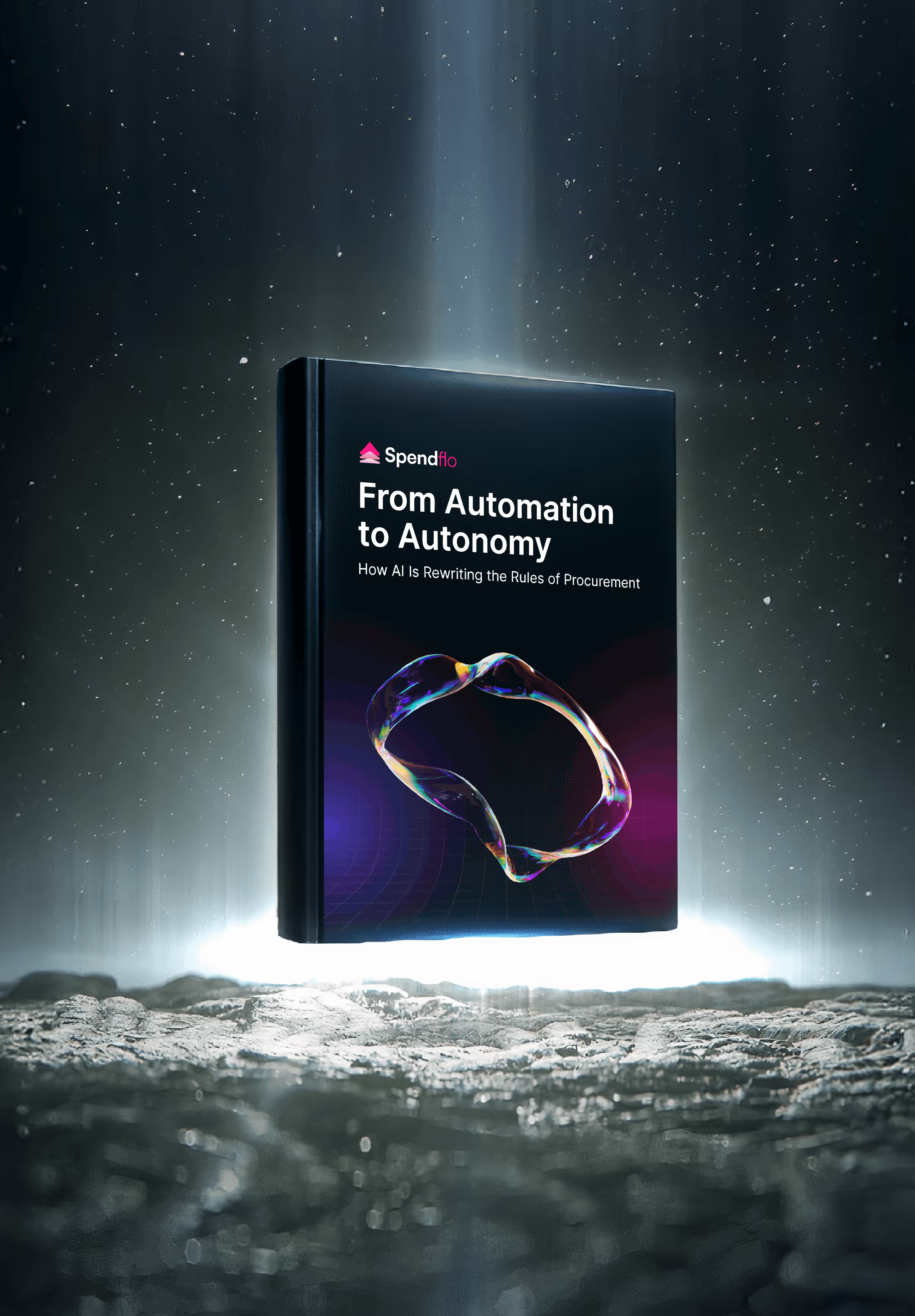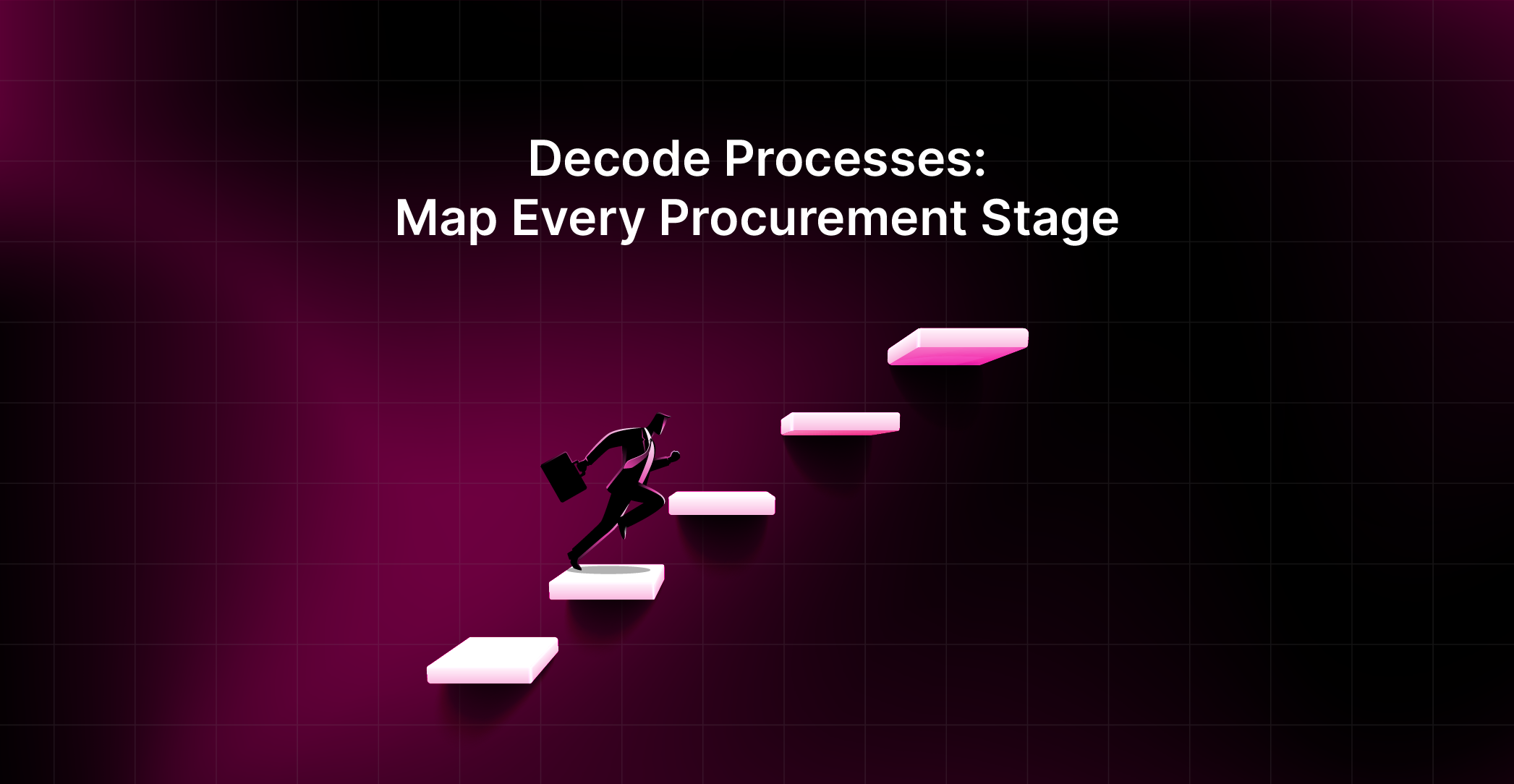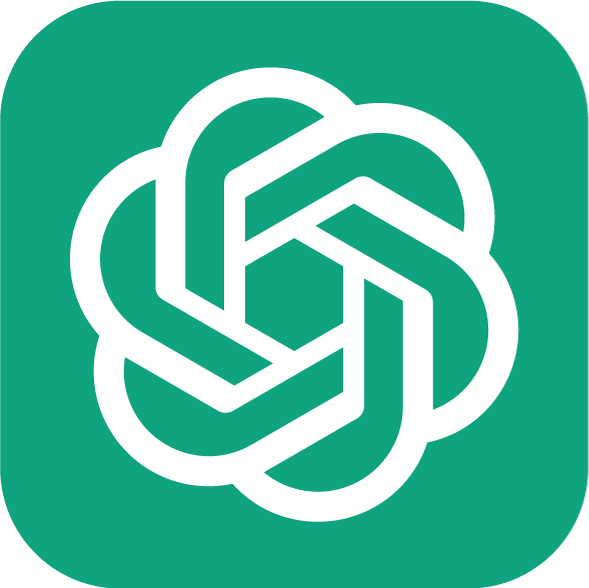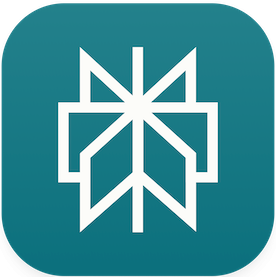

Procurement Process Flow: 7 Essential Steps and 2026 Trends Guide

Procurement Process Flow: 7 Essential Steps and 2026 Trends Guide
Learn the six essential steps in procurement. This guide covers process optimization, cost control, and strategies for efficient vendor management.


Think about the last time you made a big purchase for your home. You probably compared prices, read reviews, and made sure you were getting real value before hitting “buy.”
Now, imagine doing that hundreds of times a month but for every tool, vendor, and service your company needs. That’s what procurement teams handle daily. According to Deloitte, nearly 57% of organizations say poor procurement processes lead to wasted budgets and delayed projects. A clear, well-structured procurement process flow isn’t just helpful, it’s essential to keep operations efficient, costs in check, and compliance on track.
What is the Procurement Cycle/Process?
The procurement cycle, also called the procurement life cycle, is the series of steps a business follows to source and buy goods or services. It includes identifying needs, choosing suppliers, negotiating terms, and managing purchases to ensure efficiency, compliance, and cost control.
Procurement Cycle Guide: The 7 Essential Steps Explained
A well-defined procurement cycle helps businesses manage spending, maintain supplier relationships, and ensure compliance across all purchasing activities. Each stage from identifying business needs to reviewing vendor performance plays a vital role in achieving cost efficiency and operational control.
Below are the seven essential steps in the procurement cycle, including how to create purchase requisitions and purchase order and why following up through vendor performance reviews and record management is critical.
Step 1 – Identifying Business Needs
Every procurement cycle begins with recognizing what your organization needs to operate effectively. This could range from everyday office supplies to enterprise software or manufacturing equipment.
- Conduct an internal assessment to define the exact need and its purpose.
- Review existing budgets to confirm financial feasibility.
- Specify product or service requirements, including quality standards and delivery timelines.
- Involve key stakeholders such as department heads or finance teams to ensure alignment with company goals.
Taking the time to define requirements early prevents overspending and ensures that every purchase adds measurable value to the business.
Step 2 – Supplier Selection and Evaluation
Selecting the right supplier is one of the most important procurement cycle steps. A reliable supplier ensures consistent quality, timely delivery, and long-term cost savings.
- Research and shortlist suppliers based on past performance, reputation, and expertise.
- Compare pricing, service levels, warranties, and delivery capabilities.
- Issue Requests for Quotations (RFQs) or Requests for Proposals (RFPs) to invite competitive bids.
- Evaluate suppliers through risk assessments that include financial stability, compliance certifications, and data security standards.
Building strong relationships with dependable suppliers reduces risk and promotes smoother operations.
Step 3 – Purchase Requisition and Approval
Once needs are defined and suppliers identified, the next step is raising a purchase requisition. This is an internal document that formally requests approval for a purchase.
- The requesting team submits the requisition, detailing items, quantities, and justifications.
- The request passes through approval workflows involving department heads and finance teams.
- Each requisition is reviewed against company budgets and procurement policies.
- Automated procurement tools can simplify this process, ensuring timely approvals and transparency.
An organized purchase requisition process improves budget control, prevents unauthorized spending, and speeds up procurement cycles.
Step 4 – Purchase Order (PO) Creation and Issuance
After approvals, a purchase order (PO) is created to formalize the transaction between the buyer and the supplier.
- The PO includes critical details like item descriptions, quantities, prices, payment terms, and delivery dates.
- Procurement teams review and confirm accuracy before sending the PO to the supplier.
- The supplier acknowledges receipt of the PO, confirming acceptance and fulfillment timelines.
A clear and accurate PO ensures both parties have a shared understanding of the order, reducing the risk of disputes later.
Step 5 – Order Fulfillment and Goods Receipt
Once the PO is accepted, the supplier delivers the goods or services as agreed.
- The receiving department inspects the goods to verify quality, quantity, and compliance with the order.
- A three-way match is performed, comparing the PO, invoice, and delivery receipt.
- Any discrepancies, such as damaged or missing items, are reported and resolved promptly.
Accurate goods receipt ensures accountability and prevents payment errors downstream.
Step 6 – Invoice Processing and Payment
This step ensures vendors are paid accurately and on time while maintaining transparent financial records.
- The supplier submits an invoice, which is verified against the PO and delivery documents.
- The finance team reviews the invoice for accuracy and policy compliance.
- Once validated, payments are processed according to agreed terms.
- All invoices and payment confirmations are recorded for future audits and analysis.
Efficient invoice management strengthens vendor trust and improves financial oversight.
Step 7 – Follow-Up: Vendor Performance Review and Record Management
The final stage of the procurement life cycle focuses on continuous improvement through evaluation and record keeping.
- Conduct a Vendor Performance Review to assess how well each supplier met quality, delivery, and service expectations.
- Track key performance indicators (KPIs) such as on-time delivery rates, response time, and issue resolution.
- Maintain a vendor scorecard to guide future purchasing decisions and renewals.
- Store and Update Records contracts, invoices, purchase orders, and review notes regularly to ensure audit readiness and renewal leverage.
- Good record keeping ensures compliance, improves visibility, and provides a clear paper trail for strategic procurement planning.
Follow-up is often overlooked, but it’s a vital step that turns procurement data into actionable insights for better vendor management and cost control.
The CIPS Procurement: A Professional Benchmark
The CIPS Procurement Cycle, developed by the Chartered Institute of Procurement & Supply (CIPS), is widely regarded as the professional standard for how organizations should manage procurement and supply activities. It offers a strategic framework that extends beyond individual transactions to encompass every stage of the Procurement and Supply Cycle from recognizing business needs to reviewing supplier performance and driving continuous improvement.
At its core, the CIPS Supply Cycle emphasizes the importance of aligning procurement with organizational goals. It promotes a strategic approach focused on planning, supplier collaboration, risk management, sustainability, and long-term value creation. This makes it a powerful guide for procurement leaders seeking to elevate their function from a back-office process to a key business driver.
While Spendflo’s 7 Essential Steps outline the operational flow how teams identify needs, create purchase requisitions, issue purchase orders, and manage vendor relationships the CIPS Procurement Cycle provides the strategic context behind those actions. Together, they form a complete procurement ecosystem: one that connects day-to-day efficiency with long-term strategic impact.
The 7 Key Stages of the CIPS Procurement and Supply Cycle
According to CIPS, the Procurement and Supply Cycle involves seven interconnected stages designed to optimize purchasing decisions and supplier relationships at scale:
1. Identifying Business Needs
Every cycle starts by defining what the organization requires and why. This includes analyzing internal demand, aligning with business goals, and forecasting future needs.
2. Developing Specifications
Clear specifications ensure that all stakeholders share the same understanding of requirements covering product quality, quantity, delivery timelines, sustainability expectations, and service standards.
3. Supplier Research and Market Analysis
This stage focuses on understanding the supplier landscape. Teams assess market trends, pricing benchmarks, and potential risks to identify qualified and reliable suppliers.
4. Tendering and Supplier Selection
Organizations invite bids through Requests for Quotation (RFQs) or Requests for Proposal (RFPs). Proposals are evaluated based on price, capability, compliance, and total value offered.
5. Contract Negotiation and Award
Procurement teams negotiate commercial terms, define deliverables, and formalize agreements that meet both business and supplier objectives. This step also establishes the foundation for long-term collaboration.
6. Contract and Supplier Management
Once the contract is live, performance tracking becomes essential. Procurement teams monitor delivery timelines, service quality, compliance, and supplier responsiveness to maintain high standards.
7. Review and Continuous Improvement
The cycle concludes with performance evaluation and spend analysis. Organizations review outcomes, identify process gaps, and implement improvements for future procurement cycles.
Top Challenges to the Procurement Cycle
Even with a well-defined procurement cycle in place, many organizations encounter roadblocks that slow processes, inflate costs, and expose them to compliance risks. Understanding these challenges and how to overcome them is key to maintaining a resilient and efficient procurement function.
Maverick Spending
Challenge: Maverick spending happens when employees make purchases outside of approved procurement channels or without following company policies. These unauthorized purchases often lead to inconsistent pricing, missed savings opportunities, and a lack of spend accountability. Over time, uncontrolled maverick spending weakens negotiation power and complicates budget tracking.
Solution: Establish clear procurement policies and approval workflows to ensure all purchases follow defined guidelines. Integrate spend management tools that route every request through a centralized platform for review. Educating teams on policy compliance also helps reduce off-contract buying and encourages accountability.
Lack of Procurement Visibility
Challenge: Many organizations struggle with lack of procurement visibility, where spending data and supplier performance metrics are scattered across multiple systems. This fragmentation prevents teams from identifying inefficiencies, forecasting accurately, and optimizing budgets. It also leads to reactive decision-making rather than strategic planning.
Solution: Centralize all procurement activities purchase requisitions, purchase orders, supplier data, and invoices within a single system. Dashboards and real-time analytics can give teams a unified view of spending trends, contract renewals, and supplier performance. This visibility enables proactive planning and better cost control.
Inefficient Manual Processes
Challenge: Manual workflows remain one of the biggest barriers to procurement efficiency. From data entry errors to delayed approvals, paper-based systems increase administrative burden and slow down purchasing cycles. They also make it difficult to maintain audit trails or ensure compliance across teams.
Solution: Automate routine procurement tasks with digital approval systems, e-signatures, and real-time tracking. Automation not only reduces errors and cycle time but also frees up procurement teams to focus on strategic initiatives like supplier optimization and cost reduction.
Supplier and Contract Management Risks
Challenge: Weak contract oversight and inconsistent supplier monitoring expose businesses to operational and compliance risks. Without structured supplier management, organizations may face service disruptions, missed renewals, or pricing inconsistencies. These risks often compound when procurement lacks a formal review and escalation process.
Solution: Adopt a structured supplier management framework that includes regular performance reviews and centralized contract storage. Use automation to track key dates, renewals, and compliance requirements. A disciplined approach to risk mitigation ensures continuity, improves supplier reliability, and strengthens long-term partnerships.
Lack of Standardized Procurement Policies
Challenge: When departments operate with their own purchasing rules, inconsistencies arise in vendor selection, approvals, and budgeting. This lack of structure leads to confusion, longer cycle times, and exposure to compliance violations.
Solution: Create a unified procurement policy that defines clear approval hierarchies, spending thresholds, and vendor evaluation standards. Central governance supported by digital tools ensures consistency across departments and enables policy enforcement at scale.
Poor Data and Spend Analysis
Challenge: Without accurate data, procurement leaders cannot identify trends, benchmark supplier performance, or measure ROI. Disparate data sources make it difficult to track spending across regions or departments, limiting opportunities for strategic sourcing and savings.
Solution: Adopt an analytics-driven approach to procurement. Use tools that consolidate spend data, visualize patterns, and generate actionable reports. Data-driven insights allow businesses to anticipate needs, negotiate better contracts, and continuously improve procurement performance.
Inadequate Risk Mitigation Practices
Challenge: Procurement inherently involves financial, operational, and reputational risks. Without defined risk mitigation strategies, organizations may face supply chain disruptions, non-compliance penalties, or exposure to unreliable vendors.
Solution: Implement a risk management framework that assesses vendor reliability, monitors geopolitical and regulatory factors, and ensures business continuity. Regular audits, supplier scoring, and contingency planning are vital for building resilience into the procurement cycle.
Benefits of Procurement Cycle
A well-organized procurement process is more than just a structured workflow - it directly impacts cost savings, efficiency, and risk management. Businesses that optimize their procurement flow can improve supplier relationships, enhance compliance, and reduce unnecessary spending.
Here are some of the key benefits:

Cost Savings and Budget Control
An effective procurement process helps businesses manage expenses more efficiently by preventing unnecessary purchases and optimizing supplier negotiations.
- Reduces costs through competitive supplier bidding and better contract terms.
- Prevents maverick spending by ensuring purchases follow approval workflows.
- Enhances budget forecasting by tracking expenditures and identifying cost-saving opportunities.
- Leverages bulk purchasing power to secure discounts from vendors.
Increased Operational Efficiency
Manual procurement processes can be slow and prone to errors. A structured workflow improves efficiency by streamlining approvals, tracking orders, and ensuring timely payments.
- Automates purchase requisitions, approvals, and invoice matching to reduce delays.
- Eliminates redundant steps and minimizes paperwork with digital procurement systems.
- Enables procurement teams to focus on strategic activities rather than administrative tasks.
- Reduces cycle times by standardizing procurement workflows across departments.
Better Compliance and Risk Mitigation
Procurement involves regulatory compliance, supplier risk management, and contract adherence. A structured process minimizes the chances of financial or legal complications.
- Ensures all purchases are optimized and align with company policies and external regulations.
- Provides full visibility into supplier contracts, helping to track supplier obligations and risks.
- Reduces fraud and errors by enforcing multi-level approval workflows.
- Simplifies audits with accurate record-keeping of all procurement transactions.
Improved Supplier Relationships
Strong supplier relationships contribute to long-term business success. A transparent and well-managed procurement process fosters better communication and collaboration with vendors.
- Builds trust with suppliers by ensuring timely payments and clear contracts terms.
- Strengthens supplier negotiations by maintaining long-term partnerships.
- Ensures consistent quality and service by holding suppliers accountable to agreed terms.
- Reduces supplier-related disruptions by tracking performance and reliability.
By implementing a well-structured procurement process flow, businesses can achieve greater financial control, reduce risk, and improve overall procurement efficiency. A streamlined approach ensures that procurement teams operate with agility and precision, leading to long-term business growth and sustainability.
Best Practices for Optimizing Procurement Cycle
To streamline procurement operations and overcome common challenges, businesses should adopt best practices that enhance efficiency, transparency, and cost control. Implementing the right strategies ensures a smoother procurement process, better supplier relationships, and improved financial management.

Automate Procurement Workflows
Manual processes slow down procurement and increase the risk of errors. Automating procurement tasks improves accuracy and speeds up approvals.
- Implement digital procurement platforms to manage purchase requests, approvals, and order tracking.
- Use e-procurement tools to automate supplier selection, invoice processing, and payments workflows.
- Set up automated alerts for contract renewals and supplier performance reviews.
- Reduce paperwork by digitizing purchase orders and invoices.
Implement Supplier Performance Metrics
Tracking supplier performance ensures that businesses work with reliable vendors who deliver on time and meet quality expectations.
- Define key performance indicators (KPIs) such as delivery time, product quality, and compliance adherence.
- Conduct regular supplier evaluations to ensure ongoing efficiency and reliability.
- Maintain a preferred vendor list based on past performance and cost-effectiveness.
- Encourage long-term partnerships with trusted suppliers to negotiate better deals. '
Centralize Procurement Data
A centralized system improves visibility into procurement activities and enables decision-making driven by data.
- Store all procurement-related documents, such as contracts, invoices, and purchase orders, in a single platform.
- Use real-time dashboards to monitor spending patterns and identify cost-saving opportunities.
- Improve reporting accuracy by consolidating procurement data across departments.
- Enhance transparency by ensuring all stakeholders have access to procurement information when needed.
Establish Strong Approval Mechanisms
Clear approval workflows prevent unauthorized spending and ensure compliance with procurement policies.
- Define roles and responsibilities within the approval chain to reduce bottlenecks.
- Set spending thresholds that determine when higher-level approvals are required.
- Implement digital approval workflows to speed up purchase requisitions.
- Enforce multi-level approvals systems to prevent fraud and unauthorized transactions.
Leverage Spend Analytics for Cost Optimization
Procurement analytics provide valuable insights that help businesses control costs and negotiate better terms with suppliers.
- Analyze historical spending data to identify inefficiencies and reduce unnecessary purchases.
- Use predictive analytics to forecast procurement trends and optimize inventory levels.
- Monitor supplier pricing fluctuations to secure better contracts and avoid cost increases.
- Track savings achieved through procurement process improvements to measure ROI.
By adopting these best practices, businesses can enhance procurement efficiency, minimize risks, and cost savings. A well-optimized procurement process not only improves internal operations but also strengthens supplier relationships and ensures financial stability.
Conclusion
Procurement inefficiencies don’t just slow operations they quietly drain budgets and limit visibility across the business. Many companies still struggle with fragmented data, maverick spending, and manual approvals that leave finance and procurement teams chasing compliance instead of driving value.
A global SaaS company that faced the same challenges. Their procurement cycle was bogged down by decentralized approvals, missed renewals, and limited spend visibility. After adopting Spendflo, they gained complete control over vendor management and cut unnecessary SaaS costs by 30% within the first quarter proving that automation and visibility can transform procurement outcomes.
If your organization is still losing hours to manual processes or struggling with poor data visibility, it’s time to modernize your procurement cycle. With Spendflo, you can centralize every request, approval, and vendor relationship on a single platform giving you real-time control, guaranteed savings, and peace of mind.
Ready to take the complexity out of procurement? Book a free demo with Spendflo and see how leading teams are saving time, money, and effort without compromising compliance or control.
Frequently Asked Questions on Procurement Process Flow
What are the key steps in the procurement process flow?
The procurement process flow consists of six essential steps: identifying business needs, selecting and evaluating suppliers, obtaining purchase requisition approvals, issuing purchase orders, receiving and inspecting goods, and processing payments. Each step ensures efficiency, compliance, and cost control in procurement operations.
How can businesses improve procurement efficiency?
Businesses can improve procurement efficiency by automating workflows, centralizing procurement data, and implementing strong approval mechanisms. Using procurement software reduces manual errors, accelerates order processing, and enhances visibility into spending and supplier performance.
Why is procurement automation important?
Procurement automation eliminates repetitive tasks, reduces errors, and speeds up the entire procurement cycle.
Automated approval workflows ensure compliance, while digital tracking of purchase orders and invoices helps businesses maintain transparency and streamline vendor management.
What are the risks of poor procurement management?
Poor procurement management can lead to increased costs, unauthorized spending, supplier disputes, and compliance issues. Inefficient procurement processes may also result in delayed orders, payment discrepancies, and poor supplier relationships, impacting business operations.
How does procurement impact overall business profitability?
A well-structured procurement process helps businesses control spending, negotiate better supplier contracts, and avoid unnecessary costs. Efficient procurement ensures budget adherence, timely payments, and optimized supplier relationships, all of which contribute to improved profitability.
What are the benefits of tracking supplier performance?
Tracking supplier performance ensures reliability, quality control, and cost-effectiveness. Businesses can assess supplier delivery timelines, adherence to contract terms, and product quality. Evaluating supplier performance helps in making informed decisions, reducing risks, and strengthening vendor relationships.










.png)




.png)










.avif)





